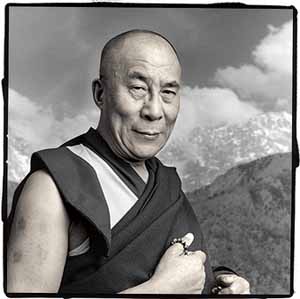 In October 2005, China announced the completion of the first railway line to Tibet - one of the world's highest train routes. The pan-Himalayan line climbs 5,072m (16,640ft) above sea level and runs across Tibet's snow-covered plateau. China spent $3 billion on the challenging 1,142km (710-mile) final section, after four years in construction. The workers who built the line had to breathe bottled oxygen in order to cope with the high altitudes. The line links the Tibetan capital, Lhasa, with the north-western province of Qinghai. The total cost of the line is $26 billion.
In October 2005, China announced the completion of the first railway line to Tibet - one of the world's highest train routes. The pan-Himalayan line climbs 5,072m (16,640ft) above sea level and runs across Tibet's snow-covered plateau. China spent $3 billion on the challenging 1,142km (710-mile) final section, after four years in construction. The workers who built the line had to breathe bottled oxygen in order to cope with the high altitudes. The line links the Tibetan capital, Lhasa, with the north-western province of Qinghai. The total cost of the line is $26 billion. The railway opened trial service on July 1 this year. Trains now connect Beijing and Lhasa via Chengdu, Chongqing and Xining. Tibet now receives 5,000 tourists every day, and with four trains steaming into Lhasa everyday, more than 2,500 passengers, most of them tourists, have begun arriving in the Tibetan capital creating additional pressure on civic facilities. The train’s popularity has caused ticket touting to increase. China has cracked down on illegal train ticket dealers and reported that local railway policemen in Beijing, Chengdu, Lanzhou and Qinghai had cracked down on 14 ticket brokering gangs. The normal price of a hard seat ticket from Xining to Lhasa is 226 yuan ($28 US) while hard sleepers and soft sleepers are 523 yuan and 810 yuan respectively. The brokers were selling tickets to Lhasa at 1600 yuan (US$200).
China says the line will promote the development of impoverished Tibet. But it is the influx of the Han Chinese from mainland China that is a long-term concern. More prosperous, better connected and definitely more enterprising, the Han Chinese have already begun to control major enterprises in Tibet. With time, many Tibetans fear they will be reduced to a minority in their own land, and thanks to the railway, Tibetan activists say Beijing can deploy more troops in the area with greater ease.
The government of the People's Republic of China and the Government of Tibet in Exile disagree over when Tibet became a part of China, and whether this incorporation into China is legitimate. In 1959, the 14th Dalai Lama fled Tibet and established a government in exile at Dharamsala in northern India. The Mongol Khans invaded Tibet in the 13th century and also ruled China at this time under the name of the Yuan dynasty. The Chinese therefore see their rule of Tibet as stretching back to this era. Kublai Khan appointed the Sa-skya Lama his "Imperial preceptor" or chief religious official in Tibet. The country was ruled by secular dynasties for 300 hundred years after the collapse of the Yuan. The first Dalai Lama, Gendun Drup lived in the 15th century and established a lineage to be the dominant religion among Mongols and Tibetans. Between the 17th century and 1959, the Dalai Lama was the head of the Tibetan government, administrating a large portion of the country from the capital Lhasa. The Chinese still had influence, sending “commissioners” occasionally backed by armed forces to extract tribute.
The British sent an expeditionary force into Lhasa in 1904 and signed a treaty fixing the border between the Indian province of Sikkim and Tibet. In 1907 Britain also recognized the "suzerainty of China over Thibet" and, in conformity with such admitted principle, engaged "not to enter into negotiations with Thibet except through the intermediary of the Chinese Government. Imperial China briefly occupied Tibet until the Republic of China was formed in 1912. The ensuing wars and revolution saw China temporarily lose interest in Tibet. That interest resuming in 1950 when the People’s Liberation Army re-entered the country and crushed the ill-equipped Tibetan Army.
 1950 was also the year Tenzin Gyatso was appointed Dalai Lama. He ruled briefly before the Chinese invaded. He negotiated with the Chinese government for ten years. However in 1959, there was a major CIA-backed uprising in Tibet. In the tense political environment that ensued, the Dalai Lama and his entourage began to suspect that China was planning to kill him. Consequently, he fled to Dharamsala, India. The uprising was crushed and tens of thousands were killed. Representatives of the exiled government say that China has killed approximately 1.2 million Tibetans since 1950.
1950 was also the year Tenzin Gyatso was appointed Dalai Lama. He ruled briefly before the Chinese invaded. He negotiated with the Chinese government for ten years. However in 1959, there was a major CIA-backed uprising in Tibet. In the tense political environment that ensued, the Dalai Lama and his entourage began to suspect that China was planning to kill him. Consequently, he fled to Dharamsala, India. The uprising was crushed and tens of thousands were killed. Representatives of the exiled government say that China has killed approximately 1.2 million Tibetans since 1950. The Dalai Lama sees the millions of Han immigrants, attracted to Tibet by economic incentives and preferential socioeconomic policies, as presenting an urgent threat to the nation by diluting the Tibetans both culturally and through intermarriage. The new railway is also viewed as politically motivated to consolidate central control by facilitating militarisation and Han migration while benefiting few Tibetans.
No comments:
Post a Comment